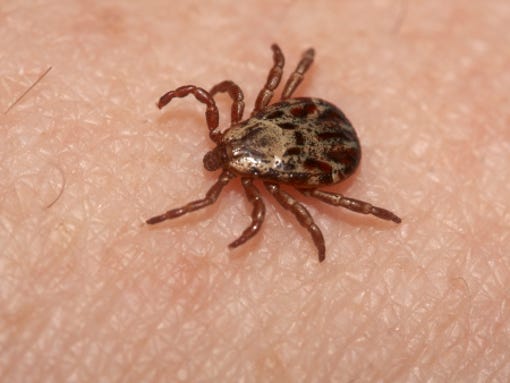By: Dr. Morgen Deramus
 |
| Photo: LaVonne Ewing, local artist and editor for Pixy Jack Press |
Rabbits in Fort Collins and the surrounding area have prospered with our recent wet weather and have done what bunnies do best:
Procreate.
You may have noticed an increased number of rabbits in your yard or neighborhood, and if you have noticed them then surely your dog and cat have noticed them as well. Although our cottontail rabbits are seemingly cute and non-threatening, they do carry diseases that can be transmitted to our pets and ultimately to us.
As you might have already heard, there is an ongoing tularemia outbreak in rabbits in Larimer County this summer. This outbreak poses an exposure risk to pets that contact sick or dead rabbits, or that are bitten by infected deer flies or ticks.
There has already been a dog in west Fort Collins diagnosed this spring with tularemia. Through surveillance testing, wild rabbits around Douglas Lake north of Fort Collins and in an area south of Ptarmigan golf course have been found to be tularemia positive as well. It is highly likely that other parts of Larimer County are also affected.
So, what is tularemia and how do we protect our pets and ourselves from infection?
Tularemia is a disease caused by the bacterium Francisella tularensis, which affects dogs and cats as well as people. In people, it causes localized infection which then leads to secondary lymph node enlargement. In more severe cases there can be multi-organ involvement involving the spleen, liver, lungs and skin. If inhaled, symptoms are primary respiratory in nature and mortality rates can be quite high.
In dogs and cats, it usually manifests as an acute 5-day illness with fever, nasal and ocular discharge, lymph node enlargement, and rash. Cats appear to be more susceptible to infection than dogs, and younger animals of both species are more severely affected than adults.
There is unfortunately no vaccine against tularemia.
Tularemia is transmitted mainly by ticks. In Colorado, this is usually by the wood and brown dog ticks which are the primary vectors and reservoirs of tularemia. It can also be transmitted by biting flies, penetrating injuries, consuming infected animals, exposure to contaminated water sources, and aerosolized infected material. The principal animal hosts are the cottontail rabbit and rodents.

Tularemia is transmitted mainly by ticks. (Photo: ironman100, Getty Images/iStockphoto)
The best way to ensure that you and your pets are protected from this disease is to institute a good tick prevention program and to limit exposure to wild rabbits. There are many products on the market that protect dogs and cats against ticks, but not all are created equal. Check with your veterinarian for the best recommendations.
- Institute a good tick and flea prevention program
- Keep your pet on a leash in natural areas.
- Work to remove habitat for wild rabbits in your yard.
- Keep cats protected mainly by keeping them indoors.
- Wear gloves, mask, and eye protection if handling dead rabbits or rodents.
If you know that your pet had contact or exposure to a wild rabbit and develops lethargy, fever, lymph node enlargement, or anything else concerning, please bring them in to your veterinarian for evaluation.
They will likely want to run a test to determine cause, but if clinically ill, most will opt to treat with antibiotics right away. Prognosis is good when prompt treatment is initiated with an appropriate antibiotic and supportive care as needed.
References:
Greene. Infectious Diseases of the Dog and Cat. 4th Ed.
http://www.larimer.org/health/ehs/tularemia-vets.htm